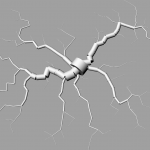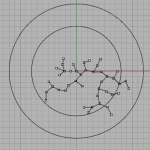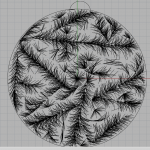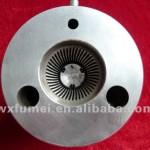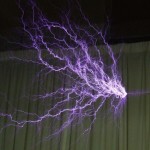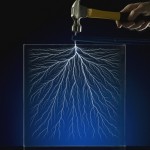In order to start playing around with branching structures I implemented diffusion limited aggregation in rhino python (rhino is a 3d modeling program). As long as the generating algorithm doesn’t require some insane speed I think it makes sense to do stuff with rhinoPython since everything is already in cad format and therefore much easier to get into the manufacture process. The following is a 3d DLA with particles being fired from some random point on a circle to another random point. If the particle comes within “stick range” of a node of the existing structure it stops and is added to the structure. All of the branches from the root to that node get a little thicker. Clearly something more involved than little tubes would be required to make something manufacturable. I am not really sure the best way to do this. Maybe some sort of volume sweeping with spheres? Or maybe make really course meshes and run smoothing algorithms.
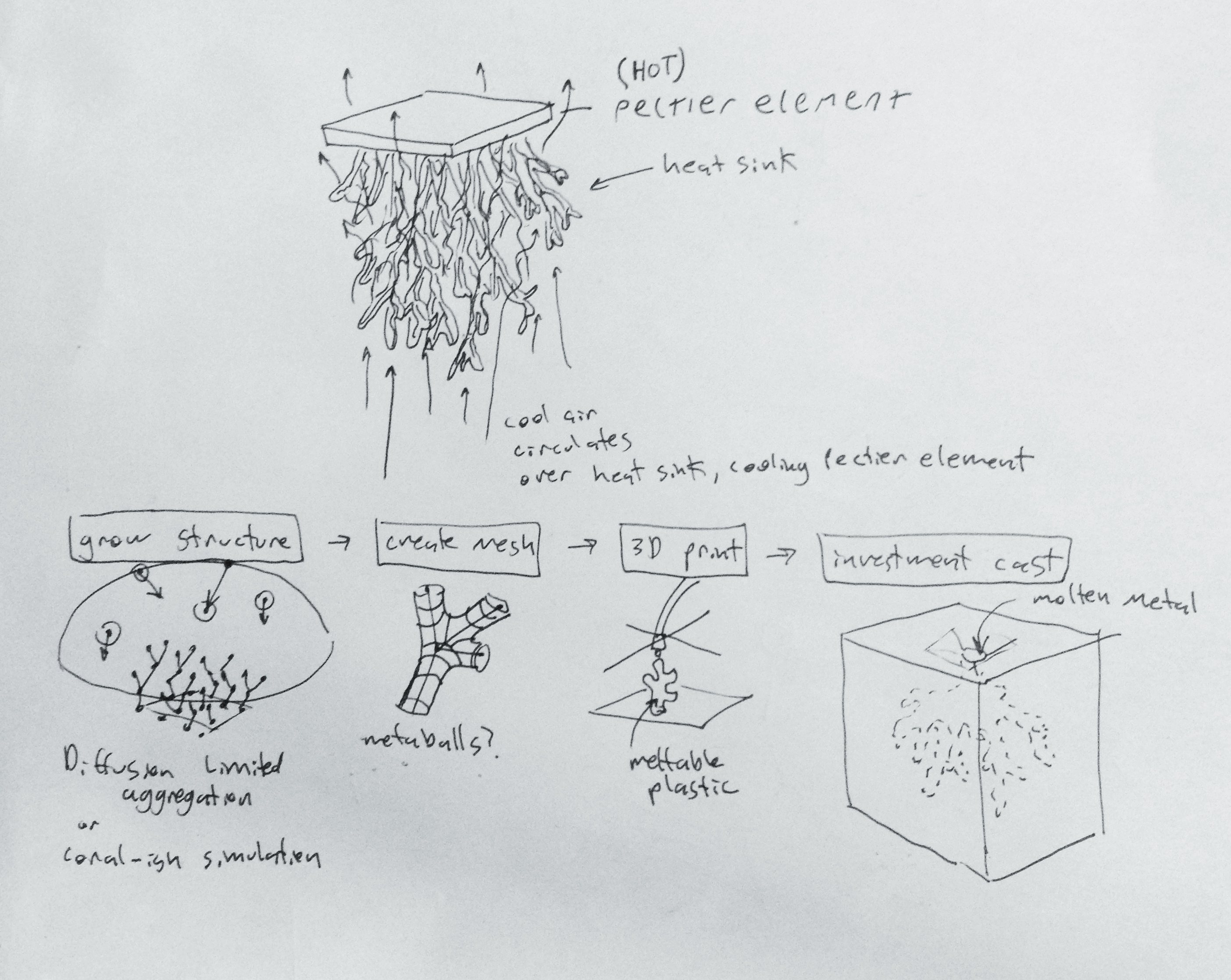
Really I would rather do something with simulating heat conduction and fluids (with heat transfer) over 3d meshes and have them grow so that nodes on the mesh are greedy for cold areas and release inhibiting agents to keep there neighbors from steeling there coolth. Like corals, sort of. But I don’t think I can do that in a few weeks. I know very little about heat transfer, and just beginning to learn navier-stokes equation and related concepts used for computational fluid mechanics. Maybe I can sort of approximate this with the particle DLA?
- an obj mesh in blender, exported from rhino
- early DLA test
- a funny glitch where particles added branches as they flew about
We also have several difficulties in getting this thing made in Aluminum and anodized black in time for the final crit.
Lost wax slurry casting, 3D printing, anodization, extrusion, we are going to make a functional sculpture of lightning that will be big and heavy.

